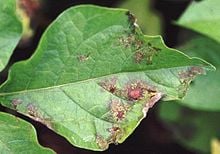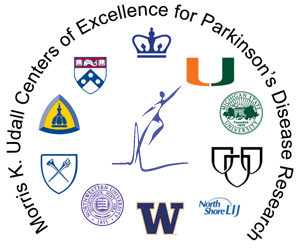 Since its first lemonade stand was set up in 2000 by a little girl with cancer, the Alex's Lemonade Stand Foundation (ALSF) has raised over $60M to support pediatric cancer research at institutions across the United States. That's a lot of lemonade. While lemonade stands are still a staple of the organization's activities, celebrity support and large fund raising events like the recent "Lemon Ball" (which raised a record $825K) allow ALSF to leverage the kind of funds that really make a difference. In a recent round of funding awards, the University of California San Francisco's Benioff Children's Hospital was named a Center of Excellence by the foundation and given $1.75M to speed translational research programs and training over the next five years. Chief investigator on the grant is Dr. Katherine Matthay, chief of pediatric oncology at Benioff. She says of the ALSF award in a recent news release:
Since its first lemonade stand was set up in 2000 by a little girl with cancer, the Alex's Lemonade Stand Foundation (ALSF) has raised over $60M to support pediatric cancer research at institutions across the United States. That's a lot of lemonade. While lemonade stands are still a staple of the organization's activities, celebrity support and large fund raising events like the recent "Lemon Ball" (which raised a record $825K) allow ALSF to leverage the kind of funds that really make a difference. In a recent round of funding awards, the University of California San Francisco's Benioff Children's Hospital was named a Center of Excellence by the foundation and given $1.75M to speed translational research programs and training over the next five years. Chief investigator on the grant is Dr. Katherine Matthay, chief of pediatric oncology at Benioff. She says of the ALSF award in a recent news release:
Tags: 2014, CA, University of California San Francisco, 2013, University of California San Francisco Mission Bay, University of California San Francisco Parnassus, cancer research, Southwest, California, University of California, Pediatric Cancer Research, San Francisco, SFVS, BioResearch Product Faire Event, Funding, San Francisco cancer research, Biotechnology Vendor Showcase, UCSF, Parnassus, Mission Bay, Benioff Children's Hospital
The Brain Activity Map project could be the next big federal life science research endeavor, with no less a goal than the mapping of the entire living brain and all its neuronal activity. Like the Human Genome Project of the 90's, the not insignificant financial outlay is being presented as an investment that will net even bigger returns, both in terms of new technology and a vastly increased understanding of the mind. President Obama is expected to include the multi-billion dollar, decade-long funding in his upcoming budget proposal, and neuroscience research was a topic he addressed specifically in his recent State of the Union address.
Tags: 2014, CA, University of California San Diego, 2013, Northeast, University of California Berkeley, New York, Columbia University, Southwest, California, University of California, Berkeley, Neuroscience, San Diego, SDVS, Columbia, BioResearch Product Faire Event, Funding, UCSD, NY, NIH, Columbia University Medical Center, Biotechnology Vendor Showcase, Berkeley Labs, UCBerk
The National Eye Institute, an NIH agency dedicated to vision research, recently announced the winners of their Challenge to Identify Audacious Goals in Vision Research and Blindness Rehabilitation, or the Audacious Goals Challenge for short. The competition was open to professionals and members of the public and called upon them to think big and bold about vision research goals for the next decades. The prize money was nominal ($3,000) but included an invitation and travel money to attend and present their ideas at the NEI Audacious Goals Development Meeting in Maryland later this month. The real prize, of course, was the opportunity to help set research and funding goals for the next 10-12 years. Of the 500 or so proposals submitted, 10 visionaries were selected as winners.
Tags: University of Michigan, 2014, CA, Harvard University, Midwest, 2013, Northeast, university of utah, Washington University, Missouri, WashU, UUtah, St. Louis Bioresearch Product Faire Event, Oregon Health and Science University, Northwest, crowdsourcing, Vision Sciences Research, National Eye Institute (NEI), Blindness Rehabilitation, Southwest, University of Alabama, Southern, UT, Ann Arbor, Boston, BioResearch Product Faire Event, Funding, MI, MA, NIH, Harvard, OR, Salt Lake City, Birmingham, AL, UCSB, Santa Barbara, OHSU, Portland, UMich, UC Santa Barbara, Rehabilitation
 Plant pathogens like the one that led to the notorious Irish Potato Famine of the 1840's are still the subject of intense research at institutions like the University of California Riverside, as the battle continues between mega-crop farmers and diseases that have learned to infiltrate the plant’s immune system. Just what the genetic mechanism is that allows for that infiltration has remained elusive until recently. Studying the notorious oomycete pathogen Phytophthora in its multiple forms, UC Riverside researchers have identified a crucial step in the disease attack of the cell, namely the activity of virulence proteins in blocking RNA silencing pathways, which leads to immune system compromise. The role of RNA silencing as an important immune component is a new research direction and one that is being pioneered at UCR.
Plant pathogens like the one that led to the notorious Irish Potato Famine of the 1840's are still the subject of intense research at institutions like the University of California Riverside, as the battle continues between mega-crop farmers and diseases that have learned to infiltrate the plant’s immune system. Just what the genetic mechanism is that allows for that infiltration has remained elusive until recently. Studying the notorious oomycete pathogen Phytophthora in its multiple forms, UC Riverside researchers have identified a crucial step in the disease attack of the cell, namely the activity of virulence proteins in blocking RNA silencing pathways, which leads to immune system compromise. The role of RNA silencing as an important immune component is a new research direction and one that is being pioneered at UCR.
Tags: 2014, CA, 2013, University of California Riverside, genome research, Southwest, California, University of California, Plant science, BioResearch Product Faire Event, Funding, Riverside, NSF, Southwest Region, UCR
In a recent press release, the Mayo Clinic revealed its goal of making its Rochester, Minnesota campus a destination medical center. The Mayo Clinic will invest over $3 billion of healthcare funding in Minnesota, making this not only the state’s largest economic development plan, but one of the largest in the country. An additional $2.1 billion in private investments will also fund the project, which includes investing $3.5 billion in the Mayo Clinic’s Rochester campus over the next twenty years.
Tags: 2014, Midwest, 2013, Minnesota, Rochester, Mayo Clinic, BioResearch Product Faire Event, Funding, MN, lab supplier, RMN, healthcare funding
The Knight Cancer Institute at Oregon Health & Science University (OHSU) in Portland has just announced an important partnership with San Diego-based bioprinting technology company Organovo. Research into the biology of cancer, especially how it metastasizes, has been complicated in the past by the limitations of animal models and cell cultures, which really don't tell us enough about the workings of cancer within a human being. Organovo creates living, 3-D human tissue using their bioprinting device, the NovoGen MMX (below). The partnership between OHSU and Organovo will allow cancer research at Knight Institute labs to much more closely model the complex architecture of malignancy within the human body, using in vitro tissue. Ultimately this will lead to the development of more accurate therapeutics and pre-clinical trials.
Tags: 2014, 2013, Oregon Health Sciences University, Oregon Health and Science University, Northwest, cancer research, Oregon, Cancer Treatment, bioprinting, BioResearch Product Faire Event, Funding, Front Line event, OR, OHSU, Portland, Northwest Region
“It’s pulsing; it’s beating! Now THAT is cool.”
Tags: 2014, Midwest, 2013, Regenerative Medicine, Minnesota, Rochester, Mayo Clinic, BioResearch Product Faire Event, Funding, MN, lab supplier, RMN
Biotechnology vendors and lab suppliers in Illinois will find a well-funded market of science researchers at the University of Illinois Urbana-Champaign, according to recent NIH and NSF funding statistics. In 2012, the NIH awarded the university $69.7 million in research funding. Of the different bio departments at the University of Illinois Urbana-Champaign, the money was distributed as follows:
Tags: 2014, Midwest, 2013, University of Illinois, Urbana-Champaign, UIUrbana, BioResearch Product Faire Event, Funding, Research Funding, NIH, IL, science researchers, NSF, lab supplier
At the University of Illinois Urbana-Champaign, biological engineers have created what is becoming known as a “bio-bot.” It’s neither a cyborg nor an android, and it can fit on the face of a dime. What makes it special is that it can walk independently: that is, without the help of any mechanisms or electronic parts.
Tags: 2014, Midwest, 2013, University of Illinois, University of Illinois Urbana-Champaign, Urbana, Urbana-Champaign, Illinois, UIUrbana, BioResearch Product Faire Event, Funding, researchers, IL, NSF, Bio-Robots, bio-bots
 The Parkinson's Disease Biomarkers Program (PDBP) is a recently-formed NIH initiative to advance research into biomarkers for the disease in order to better understand its progress and develop treatments. Some funded projects will focus on statistical analysis tools and data sharing among researchers. Others will examine early clinical manifestations of PD in patients. Still more will involve lab studies, including identification of genetic biomarkers as well as antibodies in the blood and changes in body chemistry. All projects "must inform the etiology, pathogenesis or treatment of PD," according to grant program guidelines. Research supported by the PDBP is being carried out at the 11 Morris K. Udall Centers of Excellence in Parkinson's Disease Research (logo right), directed by the National Institute of Neurological Disorders and Stroke (NINDS) within the NIH.
The Parkinson's Disease Biomarkers Program (PDBP) is a recently-formed NIH initiative to advance research into biomarkers for the disease in order to better understand its progress and develop treatments. Some funded projects will focus on statistical analysis tools and data sharing among researchers. Others will examine early clinical manifestations of PD in patients. Still more will involve lab studies, including identification of genetic biomarkers as well as antibodies in the blood and changes in body chemistry. All projects "must inform the etiology, pathogenesis or treatment of PD," according to grant program guidelines. Research supported by the PDBP is being carried out at the 11 Morris K. Udall Centers of Excellence in Parkinson's Disease Research (logo right), directed by the National Institute of Neurological Disorders and Stroke (NINDS) within the NIH.
Tags: 2014, 2013, Pennsylvania, Northeast, University of Pennsylvania, UPenn, Thomas Jefferson University, Parkinson's Disease Research, Biomarkers, Philadelphia, BioResearch Product Faire Event, Funding, Genomics, Neurology, NIH, Northeast Region, ThomJeff

